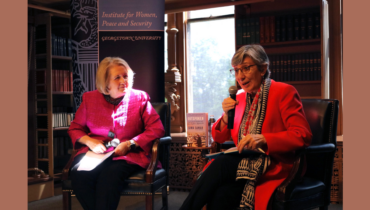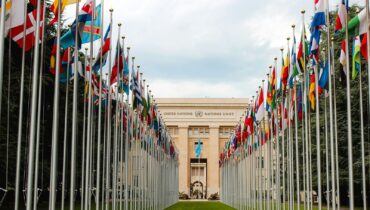GIWPS distinguished fellow Amb. Roya Rahmani offers her opinion on how to advance women’s rights in Afghanistan under Taliban rule in a new report published by the Atlantic Council. The following is an excerpt from the report.
For forty-five bloody years, some group or another has been at war in Afghanistan. Like other Afghan women, my entire life has been shaped by one conflict after another. Born on the eve of the Saur Revolution, I lived through the Soviet invasion, the Civil War, and the Taliban’s 1990s rule. Until the intervention, each chapter that unfolded was heartbreak anew. The revival of democracy and freedom brought hope. The Taliban’s takeover of Afghanistan in 2021 was even more painful and shocking than anything before because it shattered an era that had been characterized by so much progress. Amid all this turmoil, another battle has been taking place: the long and bitter struggle of Afghan women attempting to claim and retain their place in society.
For as long as I can remember, I’ve been aware of my womanhood, my otherness. For just as long, I have felt an innate urge to ignore the limitations that were imposed by my gender. As a burka-clad teenage refugee in Pakistan, I was nearly expelled from the Wahhabite madrassa (religious school) I was forced to attend for asking questions about women in Islam that the teachers simply could not answer. Determined to not be constrained by ideas about gender that I firmly believed were misguided, I spent my whole life inserting myself into what I was told were male spaces. When studying computer science in the early 2000s, there were only a few women in my degree program. While leading the Regional Cooperation Directorate in Afghanistan’s Ministry of Foreign Affairs, I was often leading meetings where I was the only woman in the room. And as the first Afghan woman ambassador to both Indonesia and the United States, I succeeded a long line of male ambassadors, directing embassies comprised of almost exclusively male diplomats. As I navigated national security issues, economics, foreign relations, peacemaking, natural disaster response, and much more, I saw over and over again how women were simply excluded from being in the right room at the right table.
To put it simply, women’s empowerment is as personal as it can get for me. Working in nonprofit organizations and government for nearly two decades, I witnessed firsthand the lives changed and hopes born out of the opportunities created in Afghanistan during the twenty-year intervention. In the wake of so much progress and hope, the Taliban’s brutal oppression of women over the last year and a half has been particularly harrowing and shocking. Each and every woman who was empowered to go to school, go to work, or just generally go where she pleased was a success story. But amid so many successes, individual and structural, there were also enormous failures that allowed Afghanistan to collapse. Our Western allies made mistakes, of course, but Afghans share responsibility for the failure to maintain stability and progress.
Women as the Way Forward attempts to make sense of the mistakes and successes of the last several decades of policymaking, as well as what needs to be done now to prevent further disaster in Afghanistan. This is all examined through a lens of Afghan women’s past and future centrality in sustainable and effective policymaking—from security to stability to economics to addressing humanitarian challenges. While the report’s historical review aims to prevent the repetition of past mistakes, the core of the paper is its recommendations for the way forward. Clearly, Western governments have made assumptions about points of leverage with the Taliban that have been incorrect and overall failed to develop a coherent Afghanistan policy. Gaining a better understanding of the Taliban’s ideology and goals, which I explore in this paper, is key to formulating more effective and grounded policy. Having completed high school in the same kind of extremist Pakistani madrassas that the Taliban were shaped in, I understand firsthand the extent of their radicalism.
This report has been the product of extensive historical and policy research as part of my work with the Georgetown Institute of Women, Peace and Security, but my personal experiences growing up in Afghanistan and working on Afghan issues over the past few decades have heavily shaped my reflections and assertions within this report. The personal nature of this material means this analysis goes beyond an intellectual exercise or moral dilemma for me. I have fought for women’s rights my whole life: the right to go to school and have an income, a voice, and autonomy. I am deeply disturbed and angered by what Afghan women are currently experiencing, and I share the instinctive desire to disengage from Afghanistan entirely given the Taliban’s intransigence— or at the very least condition aid on women’s rights. However, this does nothing to address the ongoing humanitarian crisis. People simply suffer. Ultimately, we must be doing all that is possible to save lives. It is my hope that this report can help to make the road ahead clearer. The futures of so many Afghans—young girls banned from school, women imprisoned in their own homes, and an entire generation whose dreams have been crushed—depend on what we do now.
Read the full report.


